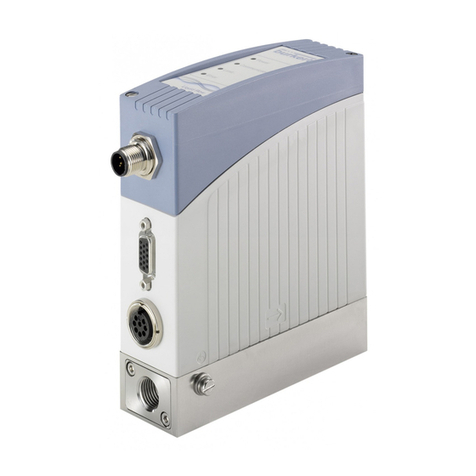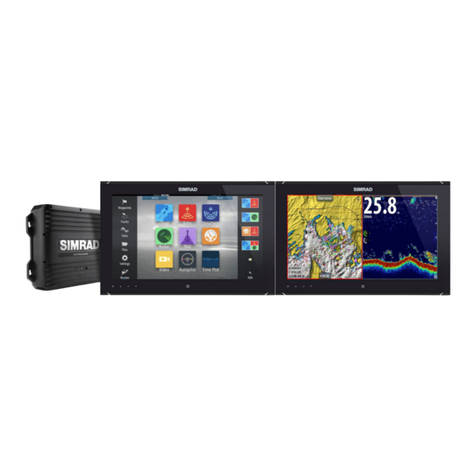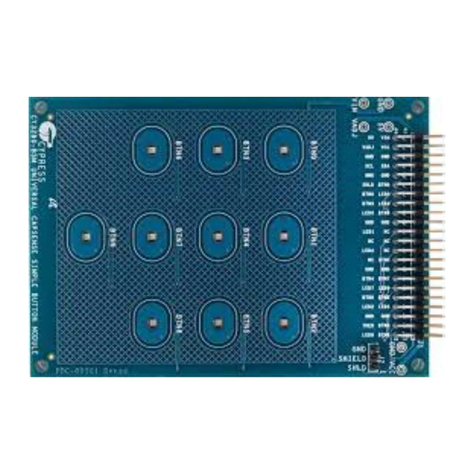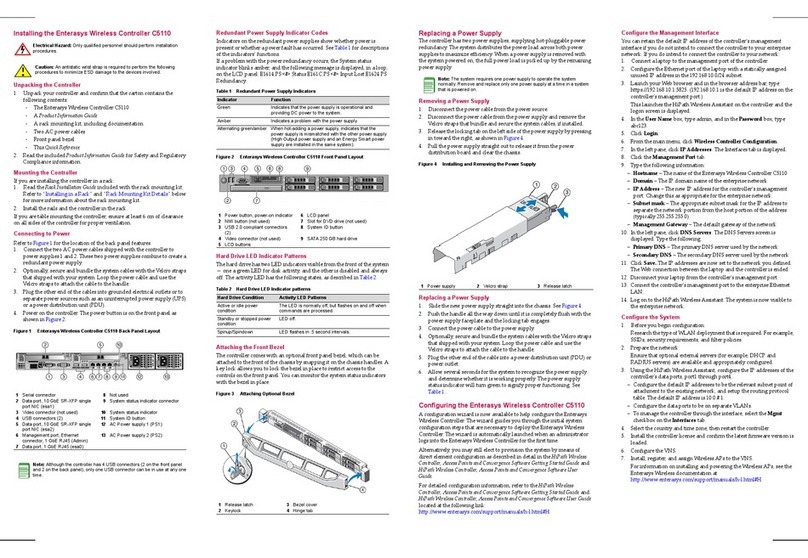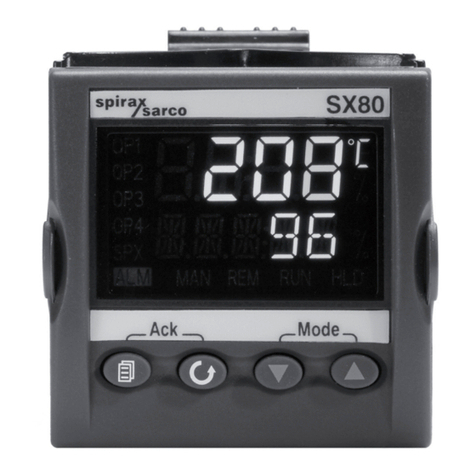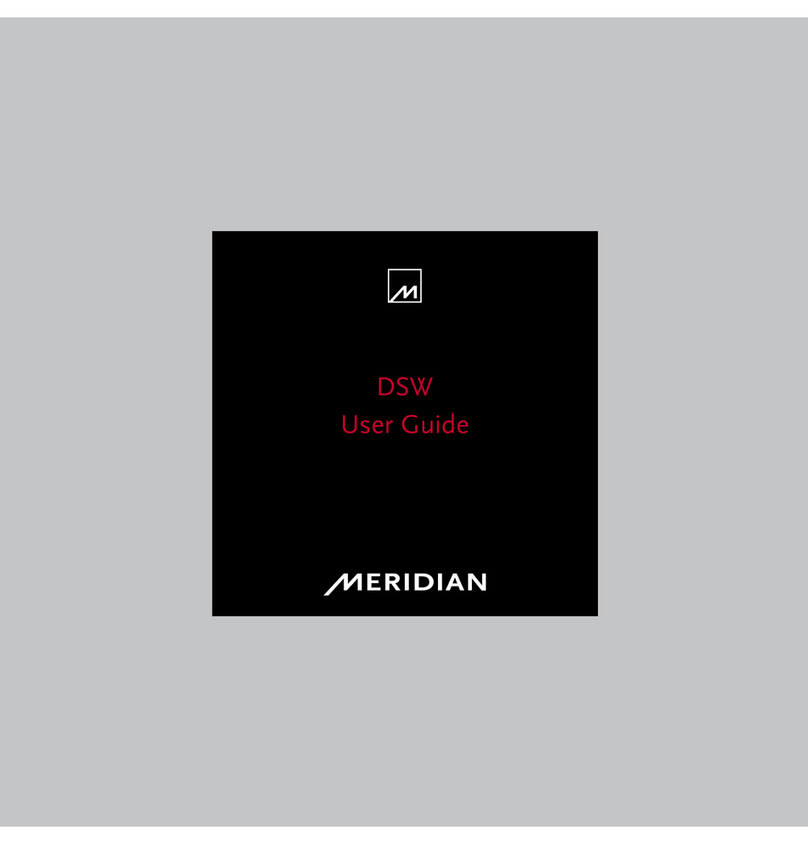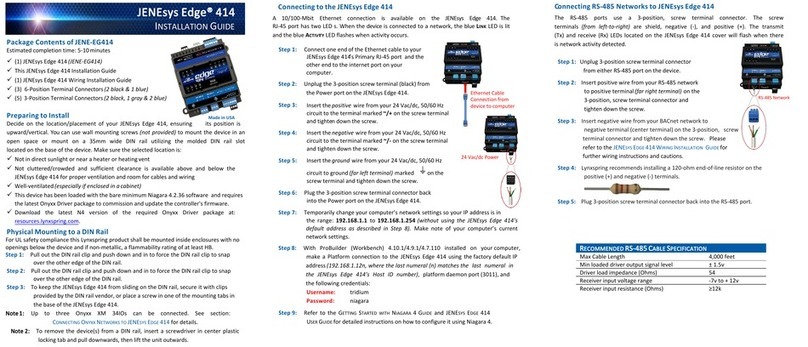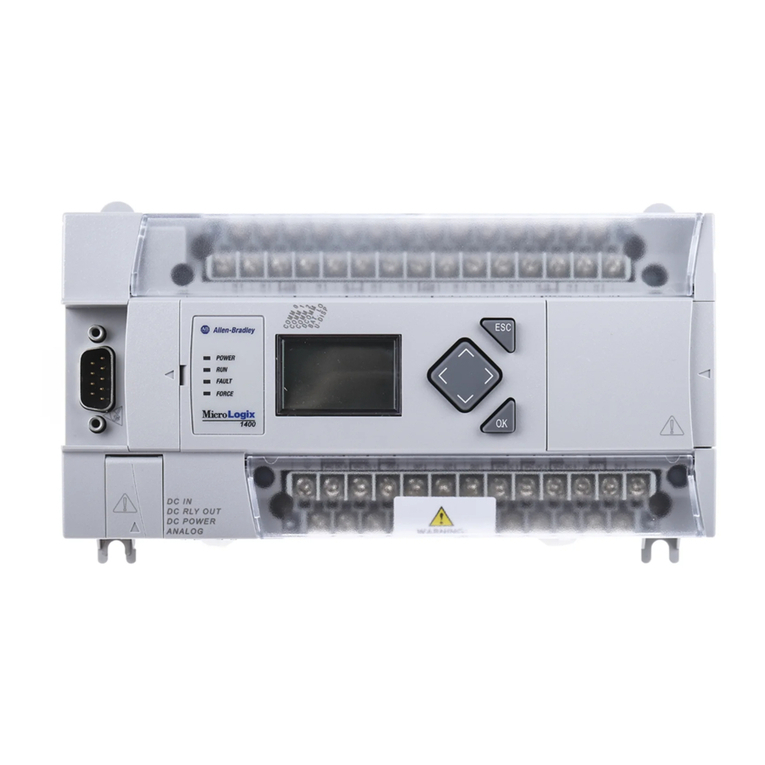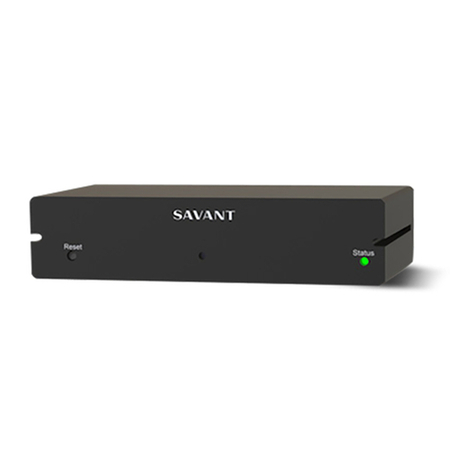CircuitWerkes DT-232 User manual

DT-232
Dial-upController&
UniversalDTMFto
RS-232Translator
CircuitWerkes
Technical Manual
CircuitWerkes
2805 NW 6th Street · Gainesville, FL 32609
(352) 335-6555 · Fax (352) 380-0230
http://ww.circuitwerkes.com
e-mail: [email protected]
c 2008 CircuitWerkes,Inc. AllRightsReserved. Allinformationcontainedwithinisproprietary.
NopartofthismanualmaybereproducedorcopiedwithouttheexpresswrittenconsentofCircuitWerkes.
Preliminary
Version 6.00 firmware
Updated 4-03-2008

Notes:

The CircuitWerkes DT-232
Description
TheDT-232 letsyouinterfaceDTMFcontroltonestoanycomputerwithaserialportandcontrol
devicesusingdrycontactclosures. TheDT-232 receives DTMFtonesfromeitheritsaudio input
connectororfromitsbuilt-intelephoneautocoupler. The DTMFtonesareconvertedtoASCIIand
transmittedtothehostcomputer. DTMFcontrolof fourrelaysontheDT-232makesitapowerful,
yetinexpensive,dial-upremotecontrol with audio pass-through capabilities.
TheDT-232 has twomain modes ofoperation: DTMFto ASCII conversion and DTMFto relay
operation. Eithermode can beused or both modescan be usedsimultaneously. When
decodingDTMF tones, the DT-232 has asimple mode thatoutputs a presetASCIIsequence
forevery DTMF tonerecieved. It also has a "sequencemode" in whichit can decode up to
nineteen DTMFsequences, ranging from 1to 3 digits. Eachsequencecan output user-
definedASCIIstrings,andperformotherfunctions,including operating the onboard relays.
Freesetupsoftwareisrequiredtofully program the DT-232 and is includedwithyour unit. It
canalsobe downloaded from thesupportsection of the www.circuitwerkes.comwebsite.
Installation & Setup
TohooktheDT-232uptoyoursystem,connectthedeviceuptoyourtelephonesystembyplugging
thetelephonecordintotheRJ-11jacklocatedontherightsideofthedevicewhenlookingatthe
back. ConnecttheDT-232toyourPCusingamale-to-femaleDB-9cable. Thecableshouldbe
connectedtotheDT-232’sDB-9jack,locatedontheleftsideofthedevicenexttothepowerjack.
The1/4”TRSjackcanbeusedasanaudioinput,asanalternativewaytobringDTMFintothe
device,orasanaudiooutputfromthephoneline. Ifeitherofthesefeaturesaretobeutilized,
connecttheappropriatepieceofequipmenttothisjack. Theaudioinput/output isunbalanced,
withthesleeveconnectedtogroundandthetipcarryingtheaudiosignal. Oncethenecessary
connectionshavebeenmade,plugthesuppliedCircuitWerkes15-VDC,200-mApoweradapter
intothewall. ThenconnectthebarrelplugofthepoweradaptertotheDT-232’spowerjackonthe
veryleftsideofthecircuitboard. Ifyouwishtouseyourownpowersupply,thepowerinputforthe
DT-232 is8V to18V,a.c.ord.c. When d.c.power isused, polarity is not important.
RS-232outputsconformtothefollowingstandards: 9600,N,8,1.or 1200,N,8,1dependingonif
J3cis "off" (9600) or "on" (1200). The default is 9600baud. Besure thehost PC is also
configuredfor9600,N,8,1oryouwillreceivegibberishoutput. Youmayselecteitherastandard
serialcableoranullmodemcablebychangingjumpersJ1andJ2.
J4disconnectsthe telephonecouplerfrom theAudio in/outjack. When"OFF", the DT-232has
ahigh impedance (bridging)input at theaudio jack butcannot send or receiveaudio from the
telephonelone. Thisjumpermust be "ON" for telephoneoperation.
When"ON" J8 delaysdetection of DTMFtones for afraction of asecond allowing greater
immunitytofalsetripping when DTMF signallingisusedover a noisy path,suchaswhen
programaudio is mixedwith the DTMFtones.

The right pane is your list of
ASCII sequences. Clicking on
any line lets you edit the sequence.
Any ascii character can be added
by entering its numeric value into the
editor, even if it is not a typeable character.
Com Port
selector
DTMF sequence encoder. Enter
numbers that you want to send in
here and push the "send" button
Software Setup & Advanced Configuration
TheDT-232includesclientsoftwarethatrunsonyourWindowsbasedPC.Thesoftwarecanbe
usedtobothsetupandcontroltheDT-232. Torunthesoftware,youmustfirstinstallitonyour
computer. Todoso,doubleclickontheDT-232Softwareinstallerandfollowtheprompts.
Oncethesoftwareisinstalled,youcanrunthemainprogram. Thenextthingtodoisselectyour
comportandconnecttotheDT-232. Assoonasyouconnect,youshoulddownloadtheexisting
configuration,evenifyouplantochangeit. Donotattempttouploadchangeswithout download-
ingfirst. Ifyouhavealready madechangestoyoursoftwareconfiguration,justsavethembefore
downloadingandthenre-loadthemafter thedownload. OnceyouhavedownloadedfromtheDT-
232,youcanmakeyourchanges& upload.Youcanalsosaveconfigurationstoalocalfile.
Thesoftwareisbrokenupintofourmainsections:
1. The top-left area is the sequence
setup section Here you can set which
DTMF tone, or tones will cause actions &
You can also setup your actions.
2. The middle-left are the user toggles.
Most of these can be set via a terminal
program but are represented graphically to
make them easier to use. Toggles with
associated
configuration settings, such as the DTMF
password, inactivity timer, etc. are also
presented here
3. The bottom left section is the terminal window.
Serial data transmitted from the DT-232 will be
visible here, including decoded DTMF tones
&any responses to setup toggles. Charac-
ters entered here that match DTMF sequences
will also cause that action to take place. In
Serial-to-DTMF mode, digits entered will be
transmitted as DTMF.
Default Output format
When the DT-232 is taken out of the box, it is set to operate in "simple mode". In this mode, it provides
basic DTMF to ASCII conversion in the following format. The default prefix letter is "E" and the number
represents the DTMF tone value received. The prefix letter can be changed using the software.
DTMF Input: 1 2 3 4 5 6 7 8 9 0 * # AB C D
RS-232 Output E1 E2 E3 E4 E5 E6 E7 E8 E9 E0 E* E# EA EB EC ED

User Toggles and Configuration:
The DT-232 has a number of advanced features that you can enable and/or program.
The basic setup toggles for the DT-232 can be configured using either the software or a common terminal
program such as HyperTerminal. To toggle the status of the settings, a short ASCII string (case-sensitive)
must be entered. The string is given below following the name of the setting. Some of the configuration
switches have accompanying values, such as timers, passwords, etc. These must be set using the
software. The DT-232 will remember the state of these settings even if the device is powered down:
·Simple/Sequence Mode Enable/Disable - “jmd” (default: Simple mode)
·The DT-232 ships from the factory in Simple mode. In Simple mode, the DT-232 does not monitor the
received DTMF tones for predefined sequences. Every time a DTMF tone is received, an ASCII prefix (“E”
by default) followed by the ASCII equivalent of the received DTMF tone is sent out on the RS-232 port.
·Depending on the configuration of the CR/LF Insert setting as described below, Carriage-Return and Line-
Feed characters may be sent out after the DTMF tone value.
·Sequence mode is used to perform complex actions which are triggered by DTMF sequences and ASCII
strings. For instance, the various commands described in the Basic Operation section are examples of
these sequences and resulting actions.
·Carriage-Return/Line-Feed Insert Enable/Disable - “jcr” (default: Disabled)
·Toggling this setting will enable or disable whether Carriage-Return and Line-Feed characters are sent out
after the ASCII equivalent of the received DTMF tone, as described above.
·Inactivity Timer Enable/Disable - “jtm” (default: Disabled)
·The inactivity timer is responsible for dropping the phone call if a DTMF tone is not received within a speci-
fied amount of time (2 minutes by default). Using the software, this value can be changed.
·Auto-Hangup Enable/Disable - “jah” (default: Enabled)
·When this setting is enabled, the DT-232 monitors the phone line for an End-of-Call (CPC) signal from the
telephone system. The DT-232 will automatically release the phone line when it sees the End-of-Call signal.
·Some PBXs and telephone systems do not provide an End-of-Call battery reversal, which is required for
auto-hangup. If this is the case for your system, you will need a CircuitWerkes CP-2 Call Progress Decoder,
which generates an End-of-Call signal when a dial tone or busy signal is detected (most PBXs and telco
systems will provide either a dial tone or busy signal at the end of a call if they do not provide the CPC
signal). See our website for more details: www.circuitwerkes.com
·Auto-Answer Enable/Disable - “jaa” (default: Enabled)
·This setting dictates whether the DT-232 will automatically answer the telephone after the specified number
of rings (default: 1 ring).
·Status Reporting Enable/Disable - “jst” (default: Enabled)
·With this setting enabled, changing any of the listed settings will cause the DT-232 to print a short message
giving the current state of that setting. For instance, enabling the Auto-Hangup setting will cause the DT-232
to send “Auto-hangup enabled” out on the RS-232 port. If you turn off status reporting, neither a terminal nor
the DT-232 software will report the current status when commands are issued. The software will state that the
unit is in silent mode. Be aware thatyou can still toggle functions, even though they are not reported, so this
mode is intended to only be used when connected to other serial hardware and should not be used during
setup due to the risk of loosing track of what you have done.
·Serial Echo Enable/Disable - “jse” (defualt: Disabled)
When this setting is enabled, the DT-232 will echo the incoming serial data back out on the serial connection. This
mode is used with terminals without internal echo. It should be off for use with the software.

User Setup Toggles Continued:
·Password-Protection Enable/Disable - “jpw” (default: Disabled)
As a security measure, the DT-232 can employ a password protection mechanism, which requires that the
DTMF password be entered before any commands can be entered. When the DT-232 answers the tele-
phone, this password must be entered. The password status will be cleared at the end of the call, so it must
be entered at the beginning of every new call.
By default, the password is “*6736*”, but the DT-232 software lets you change the password.
·Serial-to-DTMF Enable/Disable - “jsd” (default: Disabled)
·When this setting is enabled, the DTMF will monitor the incoming serial data for valid DTMF characters, such
as “1”, “2”, “A”, “*”, “#”, etc. When a valid character is received, the DT-232 will generate a short DTMF tone
corresponding to the received character. Please note that this is case-sensitive. For instance, to generate
the “C” tone, the user could enter a capital “C” character using their favorite terminal program.
·DTMF-to-Serial Enable/Disable - “jds” (default: Disabled)
·This setting tells the DTMF whether to convert all received DTMF tones to their ASCII equivalents and send it
to the PC through the RS-232 port. This is similar to the Simple mode, but DTMF sequences will still cause
the appropriate actions. Also, a prefix will not be added, nor will the CR/LF insert.
Simple Mode
Prefix Character
Selector
Number of
incoming
rings before
answer
DTMF Password DTMF Inactivity
Timer: Sets inactivity
delay before auto-
hangup (in Minutes).
Enter a zero (0) to
disable the inactivity
timer.
DTMF SEND duration:
Sets DTMF on time for
transmitted tones & spaces.
Time is set in 50ms
increments up to 12.75
seconds, max.
Using the DT-232 Software to set
the toggles and enter setup values.
Special Functions: One sequence can be assigned
to run whenever one of these special events occurs.
The events that can trigger sequences are:
1. Telco disconnect. Very handy for releasing relays.
2. Power failure.
3. External status input
Status monitor: Whenever you are connected tot he DT-232, the indicators show the current status of the
relays. Green is closed and red is open. If you are not connected, the relay indicators will be grey.
Feedback disable: If this box is unchecked, the DT-232 will not report
status. This is required in order to interface to some external hardware,
but status reporting must be enabled to effectively use the software.

One of the great power functions of the DT-232 is its sequence mode. In sequence mode, you can define
what DTMF tone, or tones, that the DT-232 will decode. There are 19 available DTMF sequences and each
DTMF sequence will output a series of user-defined action steps. There can be up to seven action steps in
each DTMF sequence. Actions can include the following functions:
Send ASCII - ASCII strings can be up to 32 characters long and can include any
of the 255 standard ascii values.
Output DTMF Tone - Transmits a DTMF tone down the line.
You can use this function to handshake with remote equipment
or to control other peripheral devices.
Close Relay - Latches a relay on
Open Relay - Unlatches a relay (turns the relay "off").
Toggle Relay - Changes the current relay latch state
Momentary Relay - closes a relay for the duration of the last tone in the sequence
Timed Closure - Similar to momentary, this mode closes a relay for a defined period
Timed Open - When a relay is latched, this function opens it for a defined period.
Pause - Do nothing for a specified period (seconds & milliseconds)
Jump Sequence - Jump to another action sequence & combine with the current one. It is possible to
accidently end up in an endless loop by calling a sequence that calls the first. Be careful not to create an
accidental endless loop with this function!!!!
The DT-232 Sequence Editor lets you select the DTMF sequences & the actions that will be performed.
DTMF Sequences
from 1 to 3
characters each
All actions associated
with each sequence
The ActionsEditor
Sequence Mode Setup

Creating ASCII Strings
Thereare 19 possibleASCII strings thatcan be
storedonthe DT-232.
Althoughthereare 19ASCII strings andthereare 19
possibleDTMFsequences, the twoare not directly
relatedbecause you arenot required toassign one
stringtoeachDTMFsequence. Instead, you can
assignmultiplestrings to onesequence if you likeand
noneatall to another.
Eachof thesestrings can be up to 32 characters in
length. Theycancontain any ofthe255 possible ascii
characters. Whenenteringcustomstrings,yousimply
typethemdirectlyonthelinethatyouwouldliketo
use. Whenyouaretyping, you will alsoseea small
box,called"Special Characters"belowyour current
line. Thisiswhereyoucanenterthenumericvalues
ofcharactersthatcannotnormallybe typed using a
standardkeyboard. Fourofthe most commonly used
characterscanbeenteredbyusing the buttons on the
form.
Sending DTMF Tones (Experimental Feature)
The DT-232 is capable of sending DTMF tones in two ways. First, it can output them as part of an action
sequence. Asecond, experimental method is also available. You can enter DTMF values or strings of
DTMF sequences into the DT-232 software play them out of the DT-232, on command, via the software. This
function is experimental and is known to have bugs, particularly with DTMF sequences.
To send instant DTMF tones, you must first enter tones, or
sequences of tones into the DTMF string editor by selecting "Edit
DTMF Sequences" from the "Send DTMF" drop-down menu.
Once you have added DTMF tones/sequences using the editor,
you can play them by clicking on the appropriate "Send" line.
The DTMF Strings are stored locally in the
software. There is no preset limit on the
number of DTMF strings that can be saved
and played.

Operation:
Thetelephoneautocouplerwillanswer calls afteroneincomingring. When the DT-232
answers,thecaller will hear twoshortDTMFTones(#,#)in succession. The DT-232isnow
readyto receive DTMF inputs. ASCIIoutput istransmitted via the serialport each timea
DTMFtoneis received. When thecallingpartyhangsup,the DT-232willalso hang up and
send“H”, followed bya line-feed. Note: SomePaBXs and other telephonesystems do not
providethenecessaryend-of-callbatterysignalsthatautocouplersneedtodisconnect. In that
event,theautocoupler may answer normally,butnotdisconnect. Ifthathappens,you can test
theautocouplerforcorrect operation by disconnecting theDT-232 from the phoneline. If
removingthephone line fromeitherthe DT-232orthewall jack causestheonline LED to
extinguishimmediately, then theDT-232 is working correctlyandtheproblemis with the phone
line. One possible solution would be to add a CircuitWerkes CP-2 in front of the DT-232 to
detectcall progress audio tones suchas busy or dial tones. CallCircuitWerkes for more
informationifyoufindyourselfinthissituation.
Power
Input
8V-18V
a.c.or d.c.
RS-232
DataOutput
Relay
Outputs Audio
In/Out
Port
Balanced,
600
Ohmsor
High
impedance
depending
onJ4
Online
LED,
Lights
when
coupler
is
active
Power
Indicator
Telephone
connection
(RJ-11c)
J1 & J2
Selects
Standard
or Null
Modem
Cable
Front
Panel
Power
LED
DTMF
Received
LED
J4- Must be
on to receive
DTMF via
telephone
line.
J8- Anti
Falsing
delay
J3C
BaudRate
Selector:
On =1200,
Off = 9600

REPAIR OR SERVICE INFORMATION
Inthe event oftheneedforserviceorrepair, callCircuitWerkesat(352)335-6555fora Return
MerchandiseAuthorizationnumber(RMA). Thencarefullypackagetheunitalongwithanote
oftheproblemandsend it to the address below. Clearly indicatetheRMAnumberon the
outsideofthebox. WecannotacceptreturnswithoutanRMA. Besuretoincludeyour
address(notaPObox), telephonenumberandbesttimetocall.
CircuitWerkes
ATTN: CUSTOMERSERVICEDEPT.
2805 NW 6th Street
GAINESVILLE, FL 32609
CircuitWerkesLimitedWarranty
This product is warranted against defects for two years from date of
purchasefromCircuitWerkesandCircuitWerkesauthorizeddistributors.
Within this period, we will repair it without charge for parts and labor.
Proofofpurchase-daterequired. Warrantydoesnot covertransportation
costs,oraproductsubjectedtomisuse,accidentaldamage,alteration
(exceptasauthorized by CircuitWerkes),improperinstallation, or
consequentialdamages.
Exceptasprovidedherein,CircuitWerkesmakesnowarranties,express
or implied, including warranties of merchantability and fitness for a
particularpurpose. Somestates do not permit limitation or exclusion of
impliedwarranties;therefore,theaforesaidlimitation(s)orexclusion(s)
may not apply to the purchaser. This warranty gives you specific legal
rightsand you may also have otherrightswhich vary from state to state.
Note: Manualsarefrequently updated in ordertoimprovethem. Thelatest version of thismanualis
availableonlineattheCircuitWerkesinternetweb site. Theaddressis: http://www.circuitwerkes.com/
E-mailmay besentto[email protected].
Special Circumstances - Power Failure:
There are several possible ways that a DT-232 can respond to power failures. Normally, the last relay state is
saved and restored. When power is restored, the DT-232 will first restore all relays to their pre-power failure
state. It will then execute any power failure sequence that you have set. Last, it will execute any sequence
that you have put in place for telco disconnect, if applicable. If the power failure occurs while the unit is not
on an active phone call, then the last relay state is recalled, followed only by any power up sequence that
you have specified. If the unit was on an active call, then the telco disconnect sequence will usually execute
unless you force the telco relay to be on as part of the power up sequence that executes prior to the telco
disconnect sequence. If you do force the telco relay "ON", then the telco disconnect sequence will not run
after a power failure because the line relay will be "ON" at the time its status is checked. Similarly, if the DT-
232 was not on an active call at the time of the failure, the status of the telco relay would have been stored as
off, so the DT-232 will not execute the hang-up sequence.
Table of contents
Other CircuitWerkes Controllers manuals
Popular Controllers manuals by other brands
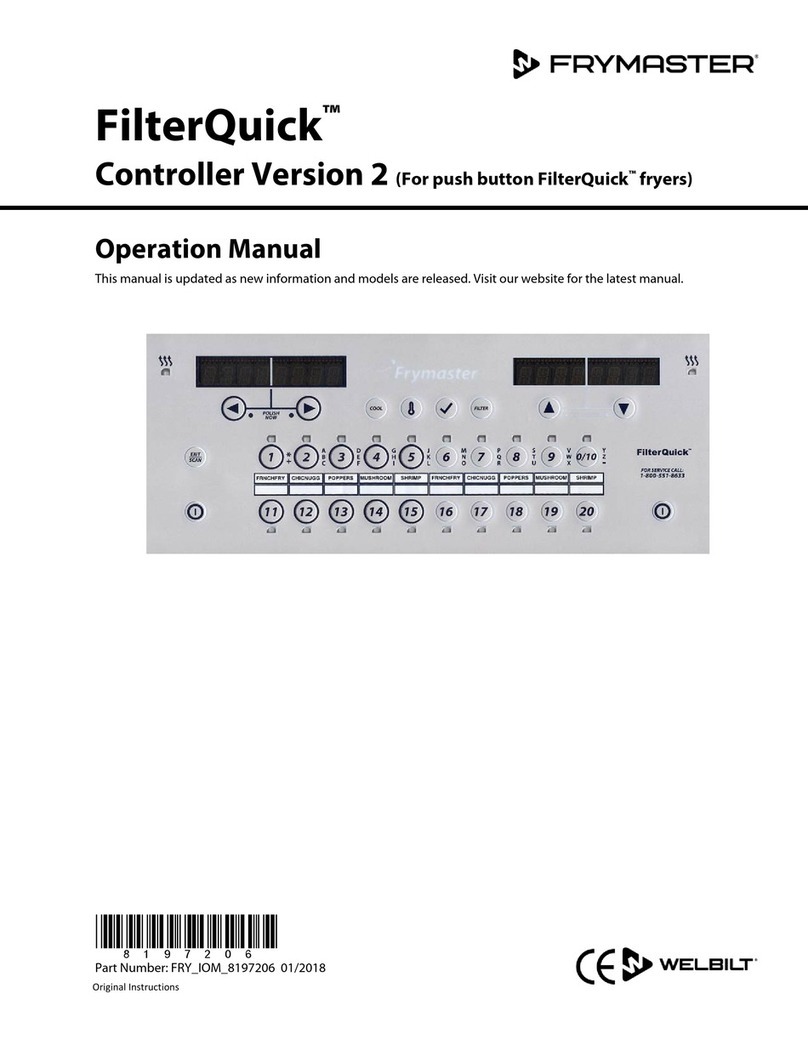
Frymaster
Frymaster FilterQuick Version 2 Operation manual
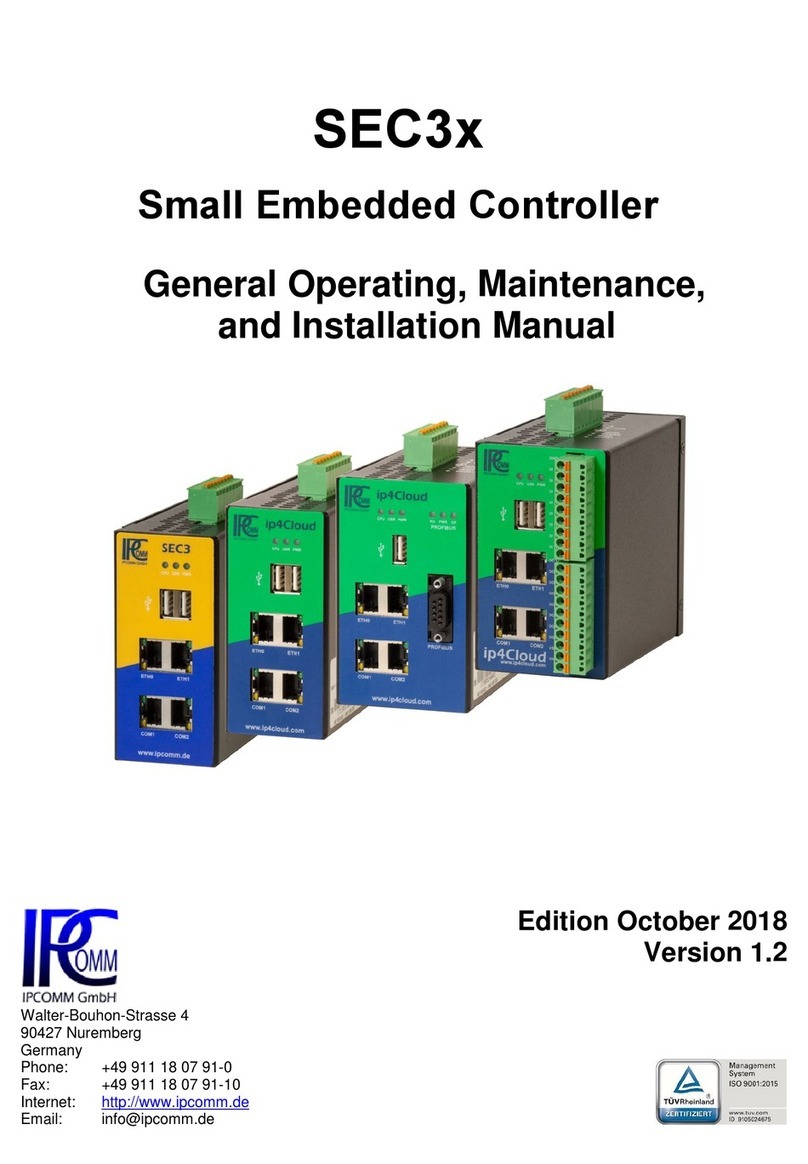
IPCOMM
IPCOMM SEC3 Series General Operating, Maintenance, and Installation Manual
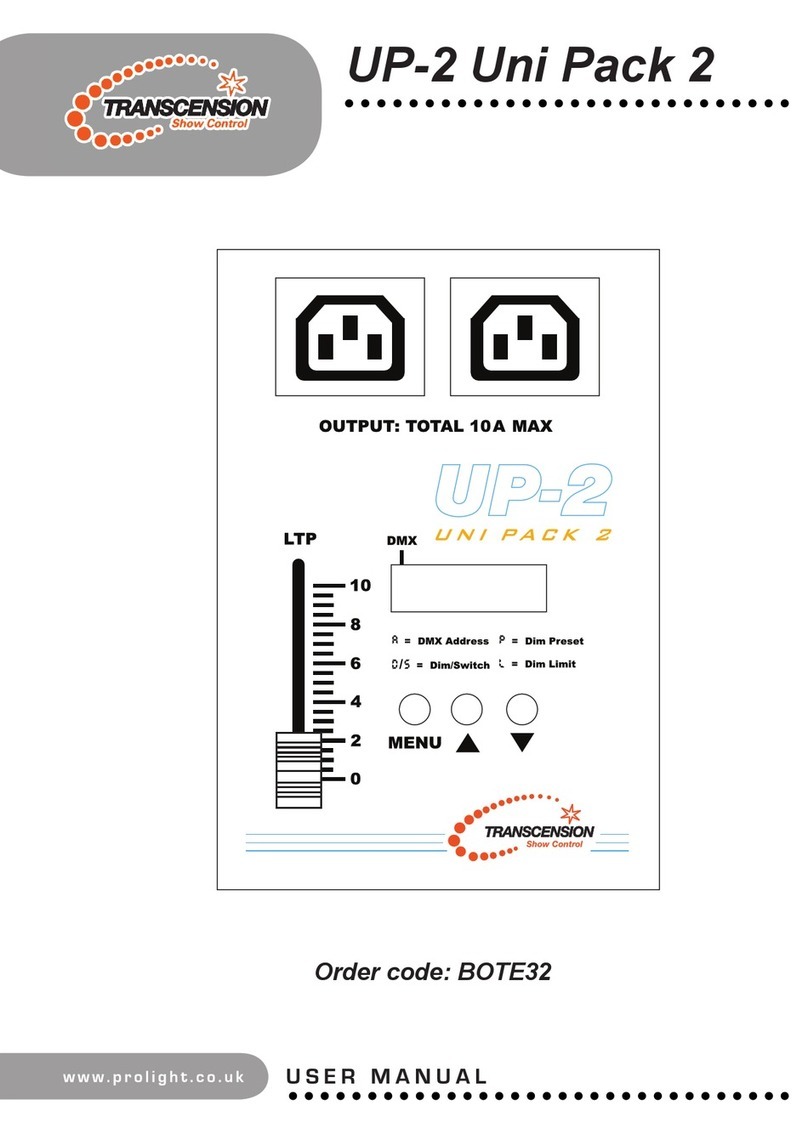
Transcension
Transcension UP-2 Uni Pack 2 user manual
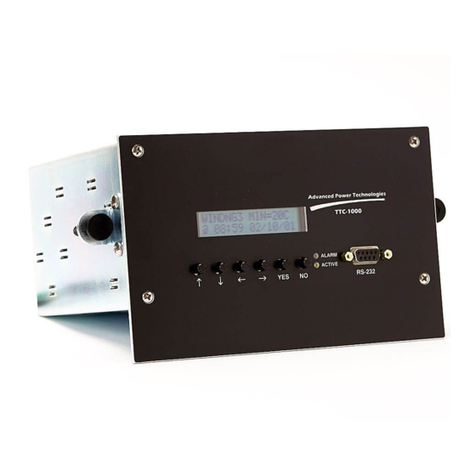
Advanced Power technologies
Advanced Power technologies TTC-1000 instruction & operation manual
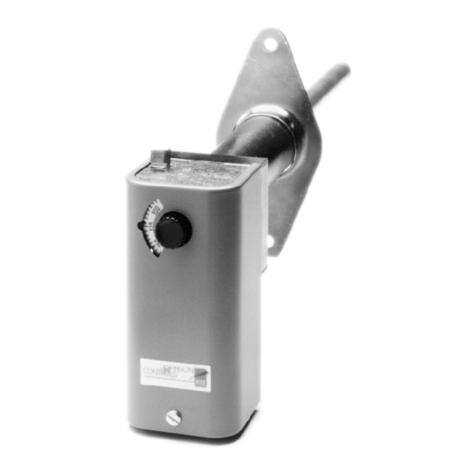
Johnson Controls
Johnson Controls A25 Series Technical bulletin
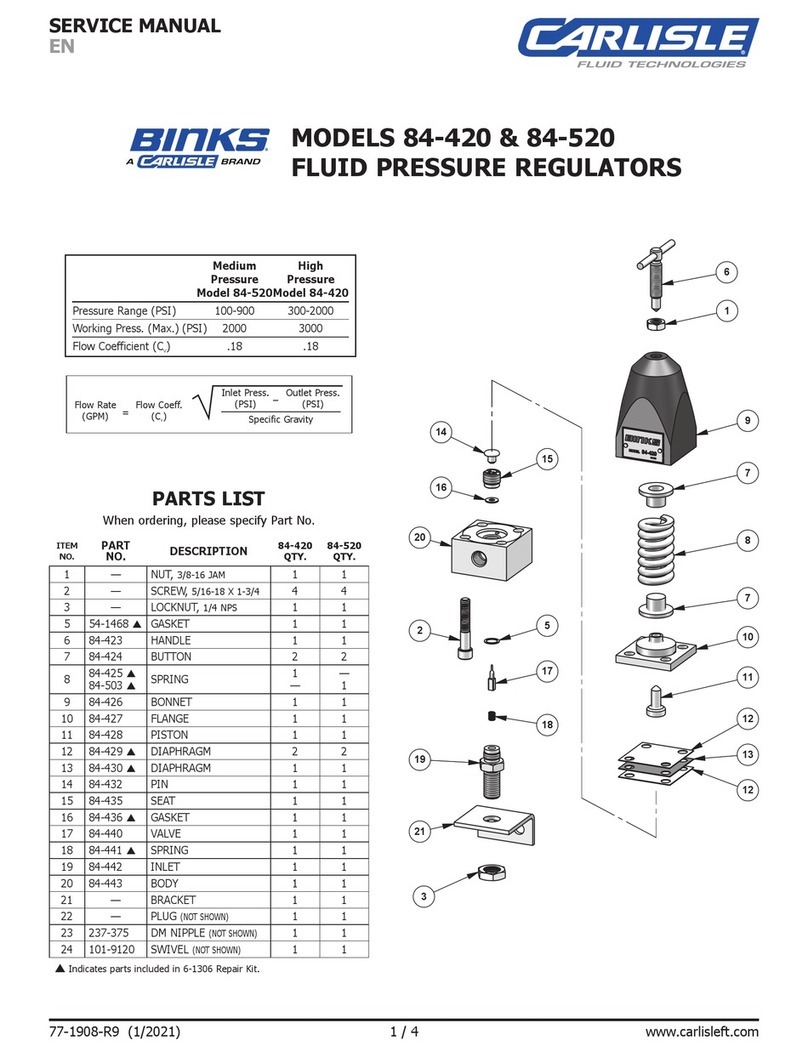
Carlisle
Carlisle BINKS 84-520 Service manual

